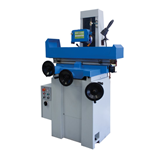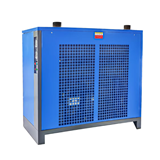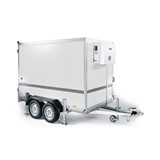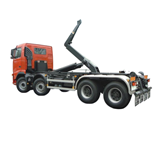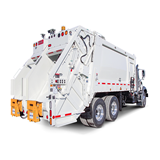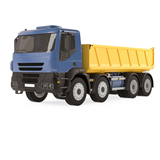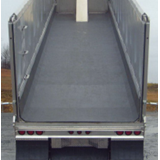Compare refrigerated truck prices in Australia. Includes van to heavy-duty costs, operating tips, finance options, compliance rules, and ROI insights.
Key takeaways
- Price range in Australia: New refrigerated trucks typically cost between $80,000 and $200,000+, depending on vehicle size, cooling capacity, and configuration. Used options start from $30,000 for smaller vans with older cooling systems.
- Popular sizes: Light-duty (1–4.5 tonnes), medium-duty (4.5–8 tonnes), and heavy-duty (8+ tonnes) trucks cater to various cold chain logistics needs.
- Top use cases: Pharmaceuticals, meat and seafood, dairy, beverages, frozen goods, meal delivery, floristry.
- Operating costs: Include fuel, coolant top-ups, compressor servicing, and insulation repairs. Budget $2,500–$5,000 annually for ongoing maintenance.
- Finance options: Chattel mortgages, hire purchase agreements, and low-doc finance available through Australian lenders. Terms typically range from 3 to 7 years.
- Compliance: Vehicles must meet NHVR mass and dimension limits, as well as Food Standards Code (Standard 3.2.2) for temperature-controlled transport.
- Warranties: Most new refrigerated trucks include a 3–5 year drivetrain warranty and 12–24 months on the refrigeration unit, with options for extended coverage.
Introduction
Transporting perishable goods across Australia’s vast and varied climate zones requires more than just a reliable vehicle—it demands a well-specified refrigerated truck. Whether you're delivering dairy in Darwin, seafood in Sydney, or pharmaceuticals in Perth, choosing the right refrigerated truck is a vital investment.
This guide unpacks everything you need to know about purchasing a refrigerated truck in Australia: from pricing and vehicle types to maintenance, compliance, and financing options. Whether you're a first-time buyer or upgrading your fleet, use this guide to make informed decisions that maximise your operational efficiency and return on investment.
Types of refrigerated trucks
Refrigerated trucks, also called “reefers,” come in multiple configurations depending on payload, temperature range, and delivery style.
1. Chiller vans and utes (1–3 tonnes)
- Best for: Small deliveries, local areas, florists, cafes.
- Cooling range: 0°C to 10°C (not suitable for frozen goods).
- Price range: $30,000–$80,000 (new).
2. Medium rigid trucks (4.5–8 tonnes)
- Best for: Daily distribution of meat, dairy, or pharmaceuticals.
- Cooling range: -5°C to 5°C (dual zone models available).
- Price range: $90,000–$150,000 (new).
3. Heavy-duty refrigerated trucks (8+ tonnes)
- Best for: Regional or interstate cold freight.
- Cooling range: -20°C to +5°C with deep freeze capabilities.
- Price range: $160,000–$250,000+.
4. Multi-temperature trucks
- Feature: Multiple compartments with independent temperature control.
- Used in: Grocery chains, meal delivery services.
- Adds: $15,000–$30,000 to base vehicle cost.
Refrigeration systems: what you need to know
Refrigeration units are either direct-drive (powered by the engine) or diesel-electric (self-contained).
- Direct-drive:
- Efficient for short distances
- Lower cost
- Engine-dependent—cooling stops when vehicle is off
- Diesel-electric:
- Ideal for long-haul deliveries or overnight storage
- More expensive upfront ($15,000–$30,000)
- Operates independently of engine
Operating considerations
- Loading best practices: Ensure pre-cooling of cargo and vehicle to avoid thermal shock.
- Temperature monitoring: Consider GPS and real-time temperature loggers for compliance.
- Insulation: Well-insulated walls (up to 100mm thick) reduce compressor workload and fuel use.
Operating costs:
- Diesel for unit: $15–$30 per day for long hauls
- Regular maintenance: ~$300–$500 per service
- Average yearly refrigeration system maintenance: $2,500–$5,000
Maintenance and servicing
Regular servicing is essential to maintain food safety and refrigeration performance.
Routine tasks include:
- Checking compressor and refrigerant levels
- Inspecting insulation and door seals
- Replacing filters and belts
- Calibrating temperature sensors
- Software updates for monitoring systems
Recommended frequency:
- Basic inspection: every 10,000–15,000 km
- Full service: every 6 months or 25,000 km
- Deep clean & leak check: annually
Replacement parts and repairs
- Compressor: $2,000–$6,000 depending on model
- Evaporator fan motors: $500–$1,200
- Door seals: $200–$800
- Temperature loggers: $400–$1,500
- Insulation panel repair: $500–$2,000+
Sourcing parts locally from certified dealers ensures warranty validity and reduces downtime.
Pricing breakdown
- Small vans: Expect to pay between $30,000 and $80,000 for new models. These are ideal for metro deliveries, such as florists, cafes, or local grocers operating in city environments.
- Medium trucks (4.5–8 tonnes): Typically priced from $90,000 to $150,000, medium-duty trucks are well-suited to urban logistics, offering greater capacity without the complexity of managing a heavy vehicle licence.
- Heavy-duty trucks (8 tonnes and above): New models range from $160,000 to $250,000+. These vehicles are best for interstate or long-haul refrigerated transport, especially for logistics companies dealing with large-scale distribution.
- Multi-temperature upgrades: Adding multi-zone temperature control (for transporting chilled and frozen goods simultaneously) typically adds $15,000 to $30,000 to the vehicle’s base cost, depending on system complexity and brand.
- Used refrigerated trucks: Pre-owned vehicles are widely available in Australia and generally cost between $30,000 and $120,000, depending on factors like age, mileage, refrigeration unit condition, and service history.
Financing options in Australia
Australian business buyers have several options for funding refrigerated truck purchases:
1. Chattel mortgage
- Asset used as security; GST claimable upfront
- Fixed interest and flexible loan terms
- Suitable for GST-registered businesses
2. Hire purchase
- Own the truck at the end of term
- Repayments may be structured for cash flow
- Some balloon options available
3. Low-doc truck finance
- Designed for businesses without full financials
- Available to ABN holders trading >12 months
- May require higher interest rate or larger deposit
Tip: Check eligibility for the instant asset write-off scheme (up to $20,000 per asset for small businesses in 2024–25).
Warranties and after-sales support
- Truck chassis warranties: Typically 3–5 years or 100,000–300,000 km
- Refrigeration unit warranties: 12–24 months standard; extended coverage optional
- Service agreements: Often bundled for fleet buyers or long-term contracts
Always confirm warranty transferability when buying used vehicles.
Compliance and certification in Australia
Key regulations:
- NHVR Vehicle Standards (Mass, Dimension, Loading)
- National Heavy Vehicle Regulator – www.nhvr.gov.au
- Overloading can result in penalties
- Special permits may be needed for oversize trucks
- Food Standards Australia New Zealand (FSANZ)
- Food must be transported at safe temperatures (e.g. chilled ≤5°C, frozen ≤-15°C)
- Refer to Food Standards Code Standard 3.2.2
- Mandatory for food transport and delivery businesses
- EPA and noise regulations
- Especially relevant for diesel-powered refrigeration units
- Check state-based environmental and idling restrictions
Certification:
- Some operators may require HACCP certification for transporting high-risk foods
- Thermologgers or cold chain monitoring systems may be required for pharma-grade transport
Cost of ownership and ROI considerations
While the purchase price of a refrigerated truck is a major factor, it's just one part of the equation. Understanding the total cost of ownership (TCO) helps buyers assess whether a vehicle is truly a good investment over its service life. For many operators, ongoing costs can significantly impact profitability.
Key ownership costs to consider:
- Fuel economy: Refrigerated trucks vary in fuel efficiency depending on size and load.
- Light vans (e.g. HiAce): ~7–9 km/L
- Medium-duty trucks: ~5–6 km/L
- Heavy-duty trucks: ~3–4 km/L
Fuel use increases when refrigeration units are running constantly, especially in warmer climates or during long-haul jobs.
- Refrigeration unit lifespan: Most modern refrigeration systems last 8–10 years, but some components like compressors and sensors may require major servicing every 3–5 years. Preventative maintenance reduces repair costs and extends unit life.
- Downtime and spoilage risk: Unexpected breakdowns can cost thousands in lost product. A failed trip carrying frozen meat or pharmaceuticals could result in $5,000–$15,000 in losses, not including reputational damage.
ROI example for a food distribution business:
A refrigerated truck costing $110,000 delivers prepared meals across Sydney. The business completes five routes per week, earning approximately $2,000/week in delivery revenue. After accounting for fuel, maintenance, and driver costs, the truck generates net income of around $1,500/week.
- Payback period: ~$110,000 ÷ $1,500 = 73 weeks (~18 months)
- ROI strengthens in years 2–5 as the truck continues to generate returns beyond the initial investment.
This simple scenario shows that a well-utilised refrigerated truck can pay for itself in under two years, depending on route density and vehicle efficiency.
Buy vs lease vs rent: what’s best for your business model?
Choosing whether to buy, lease, or rent a refrigerated truck depends on your business model, growth strategy, and capital availability. Each option has distinct pros and cons that can impact cash flow, tax outcomes, and operational flexibility.
Buying
- Best for: Established businesses with predictable delivery volumes
- Benefits:
- Full ownership after finance is paid
- Long-term cost savings vs leasing
- Greater flexibility to modify or resell
- Considerations:
- High upfront or financed cost
- Responsibility for all maintenance
- May tie up working capital
Leasing
- Best for: Clinics, food distributors, or logistics startups with moderate capital
- Benefits:
- Conserves cash flow
- Regular upgrades every 3–5 years
- Often includes maintenance packages
- Considerations:
- No asset ownership
- May cost more over time
- Restrictions on use and modifications
Short-term rental
- Best for: Seasonal businesses, trials, or overflow delivery periods
- Benefits:
- No long-term commitment
- Ideal for testing routes or meeting peak demand
- Considerations:
- Higher weekly/monthly cost
- Limited vehicle configuration options
- No equity or custom branding
Common questions about refrigerated trucks
1. How long do refrigerated trucks last?
With proper maintenance, refrigerated trucks can last 10–15 years. However, the refrigeration unit may require replacement or major overhaul after 7–10 years.
2. Can I convert a regular truck into a refrigerated one?
Yes, but it requires professional installation of insulation panels and a certified refrigeration unit. Expect to pay $20,000–$40,000 for a full conversion.
3. Do I need a special licence to drive a refrigerated truck?
It depends on the truck’s GVM (Gross Vehicle Mass). Anything over 4.5 tonnes requires at least an LR (Light Rigid) licence.
4. How do I know the refrigeration system is working properly?
Modern units include digital controllers, temperature alarms, and GPS-linked thermologgers. Regular calibration ensures accuracy and compliance.
5. Can I finance a used refrigerated truck?
Yes, many Australian lenders offer finance for used trucks under 5–7 years old with verifiable service history.
Final thoughts
Choosing the right refrigerated truck is crucial for any Australian business dealing with temperature-sensitive goods. Understanding the upfront and ongoing costs, regulatory requirements, and financing options will ensure you make the best investment for your business’s future.
Whether you’re delivering frozen seafood along the coast or vaccines across remote regions, your truck is the backbone of your cold chain operation. Use this guide to navigate your options and work with trusted Australian suppliers, lenders, and service partners.


